#Pacific Salmon Foundation
Text
CANADA: raise awareness of various threats such as aggregate mining, development and pollution facing the river’s watershed.

In Canada, a few of the events include:
⦁ The "salmon spotting campaign" of the Pacific Salmon Foundation
⦁ BC Rivers Day celebrations organized by the Outdoor Recreation Council of BC - event details
⦁ The Partnership for Water Sustainability in BC and the Nanaimo & Area Land Trust (NALT) will be releasing a much-anticipated film on Blue Ecology (or water-based ecology to some) that outlines an incredibly progressive and much needed ecological philosophy interweaving indigenous and western perspectives
⦁ The Hope Mountain Center for Outdoor Learning is organizing a giant flotilla of canoes, kayaks and voyageurs that will travel 25 km on the Fraser River from Hope to Agassiz - event details
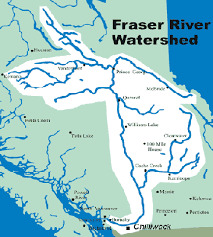
⦁ In North Delta, Surrey, the Cougar Creek Strem Keepers and the BC Wildlife Federation will be holding a 2-day workshop on Fish Habitat Stewardship - registration
⦁ A special promotional event on September 20, in Burnaby along Guichon Creek by the BC Institute of Technology focusing on tours, displays and stream side planting
⦁ In Ontario, an indigenous led group of Anishnaabe, Dene, Metis among others, known as the Water Walkers for the Missinnihe (Credit) River, will conduct ceremonies to raise awareness of various threats such as aggregate mining, development and pollution facing the river’s watershed
⦁ The Red River Paddling Challenge in Winnipeg, Manitoba on September 23-24
⦁ The Seymour River Hatchery in North Vancouver will be hosting their annual estuary clean-up and planting in conjunction with MV staff and volunteers
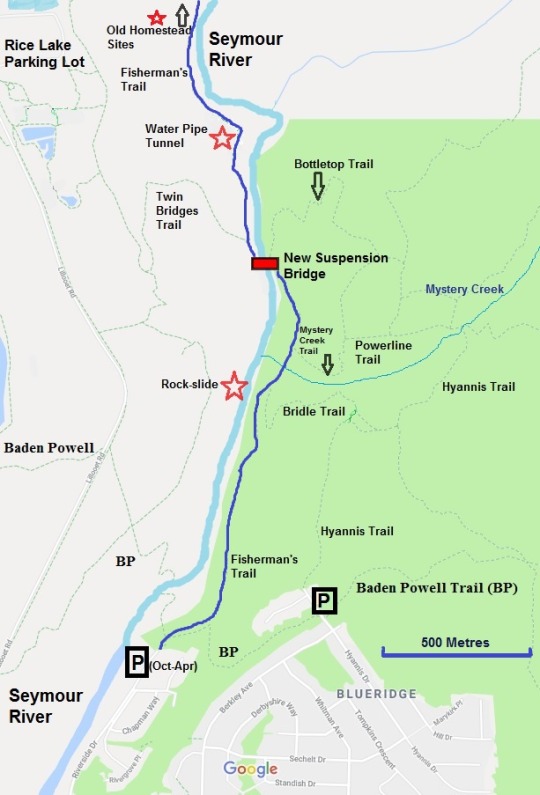
⦁ West Creek Awareness and Eddie Gardner of the Wild Salmon Defenders Alliance are planning a Rivers Day Celebration from Hope to Fort Langley. They will be highlighting the importance of saving and protecting the Fraser River wild salmon.
⦁ There will be the always popular World Rivers Day celebration in Burnaby, at the Burnaby Village Museum with lots of displays, streamside activities, and entertainment
⦁ In New Westminster, on Saturday September 23, the annual Riverfest celebration will be held in honour of WRD, and organized by the Fraser River Discovery Center.
⦁ Major cleanups on rivers such as the one organized by the Chilliwack/Vedder Cleanup Society
⦁ In Maple Ridge, the Alouette River Management Society will host their 30th annual Ridge Meadows Rivers Day celebration
⦁ On September 22, to kick off BCRD and WRD weekend, the Rivershed Society has organized a voyageur canoe trip down the lower Fraser from Dewdney Regional Park to Glen Valley Regional Park
⦁ In Vancouver, there will be a launch of Peter Rowland’s new book, Stikine Odyssey on Saturday, September 23 - event details
⦁ There will be the launch of expanded fishing line recycling efforts by the Freshwater Fisheries Society and the ORCBC in British Columbia
⦁ In Qualicum Beach, Vancouver Island, there will be some amazing activities on the “Art of Nurturing Nature” including the Story of Beach Creek and other fish tales - event details
⦁ In Carman, Manitoba, the : Keepers will be hosting a special WRD event
⦁ And a special Riverfest celebration will be held in the town of Lytton BC.
Events WRD2023 - In canada.
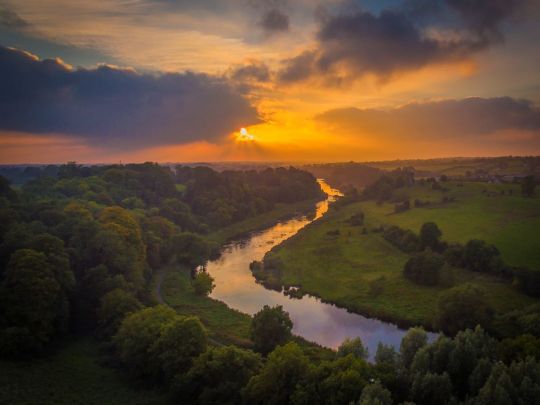
#Canada#world rivers day#24 september#waterways#Hope Mountain Center for Outdoor Learning#Nanaimo & Area Land Trust (NALT)#Partnership for Water Sustainability in BC#Outdoor Recreation Council of BC#Pacific Salmon Foundation#BC Rivers Day#riverkeepers#Ridge Meadows Rivers Day#Rivershed Society#Boyne River#Riverfest#Fraser River#water-based ecology#BLUE ECOLOGY
0 notes
Text
The fight to keep invasive mussels from damaging B.C. lakes and waterways got some financial support this week, but it falls short of what’s needed, officials say.
On Tuesday it was announced that BC Hydro is supporting the province’s Invasive Mussel Defence Program with a new five-year commitment of annual funding of $900,000 beginning in 2024.
The BC Wildlife Federation, Pacific Salmon Foundation and Habitat Conservation Trust Foundation are also providing a collective contribution of $150,000.
These investments join the province’s core funding and the ongoing contributions provided by the program’s founding partners, which include the Columbia Basin Trust, Columbia Power and FortisBC. [...]
Continue Reading.
Tagging: @newsfromstolenland
32 notes
·
View notes
Text
The U.S. Supreme Court on Monday began hearing oral arguments in a case that corporate polluters are hoping will take an axe to the Clean Water Act, a bedrock environmental law that protects the nation's streams and wetlands from industry exploitation.
The long-brewing case in question, Sackett v. Environmental Protection Agency, was brought by Idaho couple Chantell and Michael Sackett in partnership with the right-wing Pacific Legal Foundation—and with the backing of industry groups eager to curtail the federal government's authority to regulate and preserve the nation's waterways.
In an analysis of the case's implications, Earthjustice argued last week that Sackett v. EPA "is not about a parcel of land, let alone a lake house, but is a coordinated push by industry polluters that want to blow a hole in the Clean Water Act, bulldoze cherished wetlands, and contaminate the country's streams with waste from mining, oil and gas, and agro-industrial operations as they see fit, just to maximize their profits."
"If the Supreme Court excludes Clean Water Act protections from major wetlands and other waters," the group warned, "the damage to water quality, flood control, and wildlife habit would be severe, and could pose a grave danger to communities across the country, especially low-wealth communities, Indigenous communities, and other communities of color that all too often bear the brunt of toxic pollution, flooding, and excessive industrial development."
"This decision will be nothing short of a life-or-death sentence for coho salmon, razorback suckers, California tiger salamanders, and hundreds of other endangered animals that rely on ephemeral and intermittently flowing streams and wetlands," Hannah Connor, a senior attorney at the Center for Biological Diversity, said in a statement to The Washington Post.
2 notes
·
View notes
Text
Buy Beer, Save the Whales: Vancouver Island Brewing's Pod Pack Launches for 2021
Buy Beer, Save the Whales: Vancouver Island Brewing's Pod Pack Launches for 2021 @psf @vibrewing #beer @AceBrewery @BrewUkee #charity
What do beer and orcas have in common? The Pacific Salmon Foundation. Salmon are a food source for our resident orcas. From now into early summer Vancouver Island Brewing is partnering with the Pacific Salmon Foundation to offer a special beer pack, the “Pod Pack”, where a portion of the funds will go to support the Foundation, which will then support our orcas. Here is their press…

View On WordPress
#Ace Brewing Company#beer#charity#Mayne Island Brewing Co.#orcas#Pacific Salmon Foundation#salmon#Ucluelet Brewing Co.#Vancouver Island#Vancouver Island Brewing#Whistle Buoy Brewing
0 notes
Photo
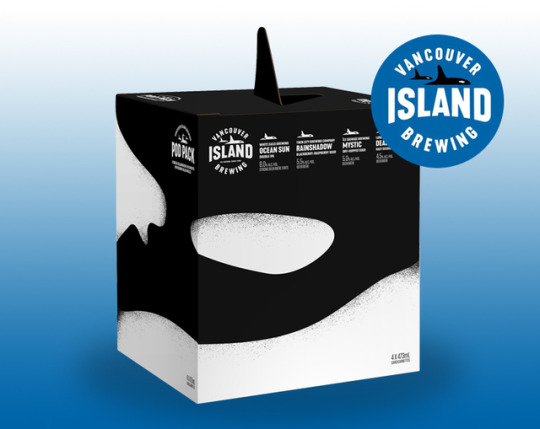
Vancouver Island Brewing Pod Pack A COASTAL COLLABORATION THAT BENEFITS OUR RESIDENT KILLER WHALES – INTRODUCING THE POD PACK BY VANCOUVER ISLAND BREWING…
#Canada Malting#Great Little Box Company#Îsle Sauvage Brewing#Land and Sea Brewing#One Twenty Three West#Pacific Salmon Foundation#Pod Pack#Twin City Brewing#vancouver island brewing#Westkey#white sails brewing
0 notes
Photo
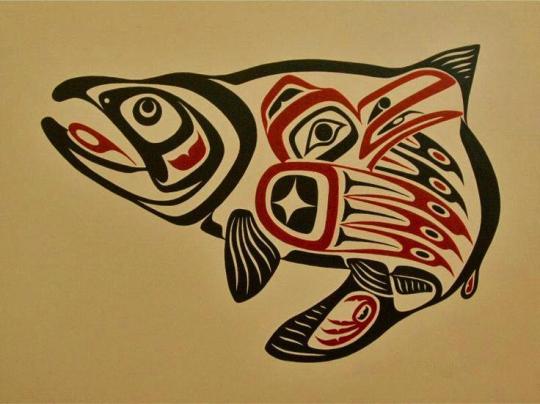
Salmon Tale 2
April White
from the website:
Every salmon sport fishing enthusiast in British Columbia possesses—knowingly or unknowingly—a piece of art by April White, for every salmon license in the province carries a stamp designed by this talented Haida artist. The Pacific Salmon Foundation Salmon chose her design “Salmon Tale” for their 2015/16. This became the first and only time in 25 years that an aboriginal person was so honoured.
23 notes
·
View notes
Photo


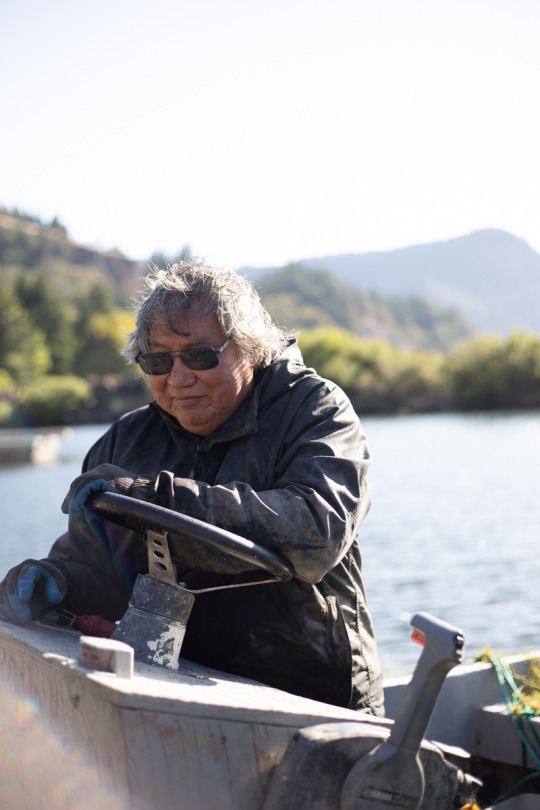
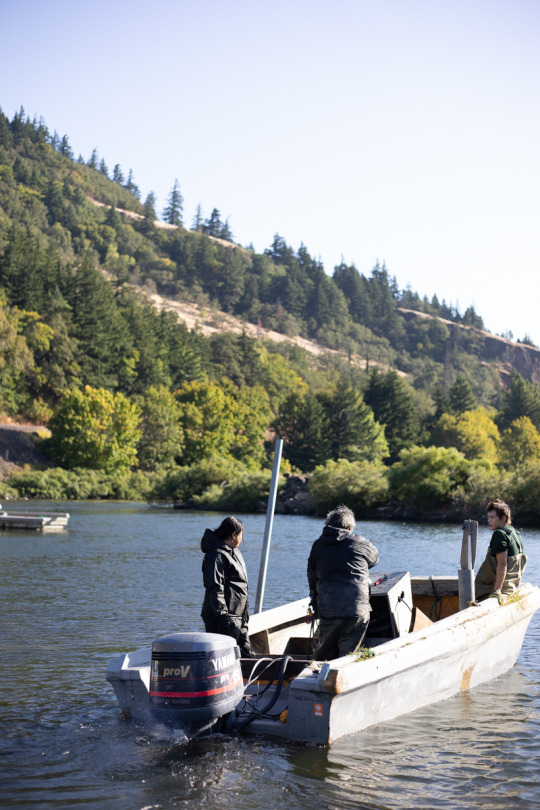
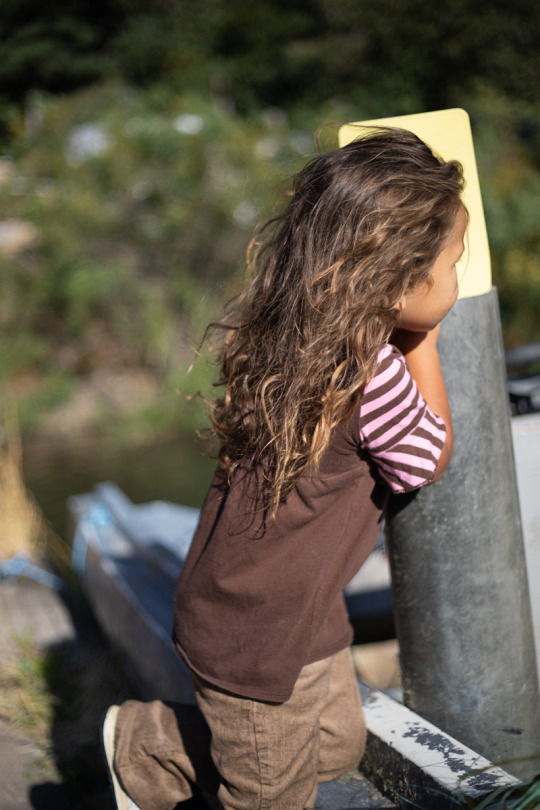
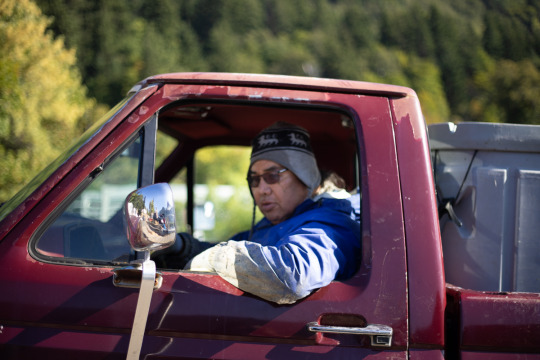
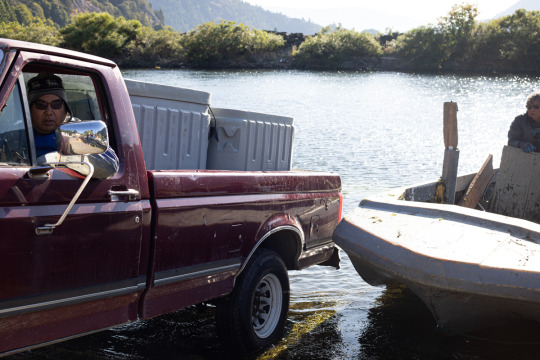
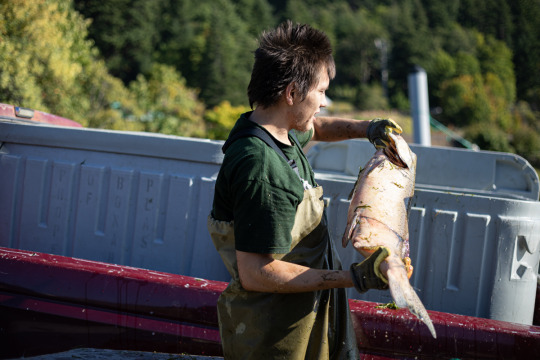

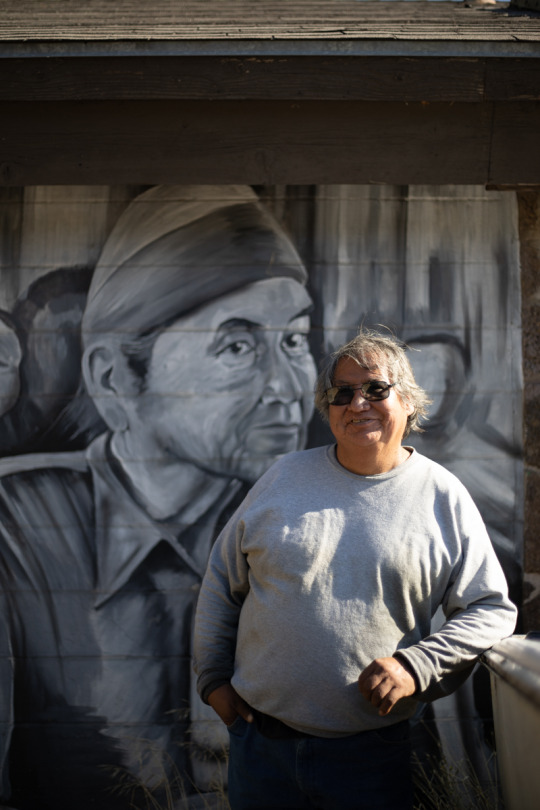
Well, hmmm, yes. These are not Black Portlanders.
On the morning of August 28th I drove out with my sister Kalimah Abioto to Cooks Landing on the Washington side of the Columbia River to meet with Yakama Nation activist, historian, writer, and poet Emily Washines. My goal was to contribute photographs for a piece on Yakama Nation fishing practices and the Sohappy v Smith case.
This week the piece, “Fish Warriors”, was published at Cascadia Magazine. I will leave it to you all to read and engage this history as written by Emily Washines. Please take the time.
An excerpt from “Fish Warriors” as written by Emily Washines ..
“The details of the civil rights struggle for treaty fishing rights, as well as life on the river for tribes today remains little known to many non-native people. For example, the 14 Yakama fishers who went to court in federal fishing cases beginning in 1968 are rarely referenced by name, even when the Columbia River tribes talk about the contemporary fishing rights movement. This year marks the fiftieth anniversary of a complicated court victory involving federal, tribal, and state management of fish. Those 14 fishers were cited for fishing out of the “official” state season at various sites on the Columbia River, including the place we are fishing today.
These are the names of those involved in Sohappy v. Smith: Richard Sohappy, Aleck Sohappy, David Sohappy, Myra Sohappy (David and Andy’s mother), Clara Sohappy, James Alexander, James Alexander. Jr., Leo Alexander, Clifford Alexander, Henry Alexander, Andrew Jackson, Roy Watlamet, Shirley McConville, and Clarence Tahkeal. For the purposes of the case, they are collectively known as the Yakama Fishers, with David Sohappy Sr. also identifying with his Wanapum lineage.
In 1968, the fishers were tired of the state trying to assert authority over treaty fishing rights and so challenged them in an act of civil disobedience. In 1969, a federal court in Oregon ruled in favor of the Yakama fishers and reaffirmed tribes’ treaty rights to fish in the “usual and accustomed places” they had frequented on the Columbia River for millennia.”
... I want to thank Emily Washines and David Sohappy Jr. for being open to having me in this space. I also want to thank the other fishermen and fisherwomen I briefly met, engaged with, and photographed in the few hours I was at Cooks Landing.
I first learned some about the history of the Columbia River Tribes in 2016 through a piece written Molly Harbager at the Oregonian. That story detailed the displacement of the Columbia River Tribes for the Bonneville, Dalles, and John Day dams. To this day the dams generate 40% of the state’s electricity. I was deeply affected by learning this history. I am not from the Pacific Northwest. I’m a Black woman of African descent originally from Memphis TN. Because of, not in spite of my identity and history, it became deeply important to me to figure out some way that I could healthily contribute in ways that might directly be of service, as defined by people coming from Pacific Northwest based Indigenous history and lineage.
I know that storytellers can have power. I know that the person who has the podium, wields the pen, or the camera can wield a power.
For me it became, and still is, a working question of how to healthily contribute to the work, human, and civil rights struggles of communities of which you are not a part and are not directly descended. It’s a question that has also influenced my practice as a Black storyteller from Memphis working and actively researching the histories of Black people in Oregon. How do you contribute your gifts while listening, respecting, and not in practice wielding a power or authority that is not your own? There are so many nuances here to intuit and respect, particularly in communities that have historically been harmed, displaced, those whose cultures, presence, and inherent authority have been purposefully denied. There’s much, in practice, to learn. How do we begin? How do we continue?
I also want to thank Andrew Engelson over at Cascadia Magazine for his support in implementation of this piece. Almost two years ago we connected and I shared with him a passion I had to know more and be a part .. of something. I wasn’t connected with anyone from the Columbia River Tribes, so could not speak to much besides the history I had read and my feeling. I wasn’t sure where to begin. He supported the development of this project at every step and connected us with Emily Washines. Emily brought up the history of the Yakama Fishers, Sohappy v Smith, and the possibility of engaging with David Sohappy Jr. The project progressed from there.
This engagement was new for me, but personally important. I come from Black people and Black women historians, activists, artists, educators, civil rights lawyers, advocates .. for whom it was and is important to self-define, to know deeply one’s power, and to take part in the ongoing creative process of human rights.. human rights struggles, human rights stands. From my heritage, of which I am proud, this is the work. And it remains the foundational basis of my artistic practice and inquiry today. The work/s is/are ongoing. There’s much that I still don’t know about the histories of the Pacific Northwest. Much that I am still learning. These are deep and important histories. This is deep and important present. But I see confluence .. openings.. offerings.
If we are thinking about the history of civil rights movements there are cross sections of history here worth knowing and noting. In 1968, the 14 Yakama Fishers named above were making their stand on the Columbia River or Nch’i-Wàna, as it is known by the Yakama. This is history that everyone in this region and beyond should know. That same year, 1968, Black men, women, and children were making their stand in Memphis during the 1968 Sanitation Workers Strike that brought MLK and others to Memphis. We are 50/51 years out from both of these stands, these occurrences.. and many others that aren’t mentioned here. We should know and celebrate each and all of these contributions. There are many parallels, many stories to tell, and much power, still, through the telling to activate. We should know that the legacy of their contributions are still and yet playing out.. and the power and inspiration inherent to them, is still available to us. History is still being presented in our shared present. We can consider where we stand in these histories and make positive and powerful contributions to the moment. For present consideration, this past October 14th, the Yakama and Lummi Nations called for a takedown of the John Day, Dalles, and Bonneville dams. It’s important to continue to educate ourselves on the history actively being made by, and importantly as told by, the Columbia River tribes and Indigenous Peoples in the Pacific Northwest.
I won’t write more here. Please read Emily Washine’s excellent written work.
In addition on Tue. Dec 3rd, I’ll be joining Emily Washines, David Sohappy Jr., and Cascadia Magazine for a talk and slideshow about Yakama fishing traditions and the 50th anniversary of the Sohappy v Smith ruling at a free event at the Yakama Nation Cultural Center Heritage Theater in Toppenish, WA. The event will also feature a screening of the 1971 short video documentary “Little White Salmon Indian Settlement” by Harry Dawson.
Very best,
Intisar Abioto
#yakamanation#emilywashines#Nch’i-Wàna#yakama#davidsohappy#intisarabioto#cascadiamagazine#washingtonhumanities#cookslanding#columbiariver
10 notes
·
View notes
Text
You have until this Friday to support Loopworks, by purchasing a Hopworks Homebound Hero 24 Pack.
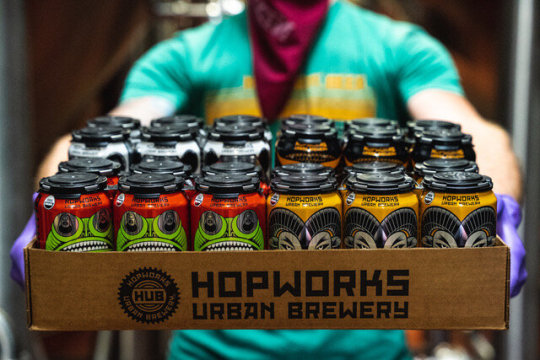
image courtesy Hopworks Urban Brewery
In the absence of normal social gatherings, breweries like Portland’s Hopworks Urban Brewery are taking steps to support your need to stay at home or practice safe social distancing.
Announced a couple weeks ago, Hopworks has released a variety case called “Homebound Hero 24 Pack”. Within this case are four six-packs of the brands core beers. This included Golden Hammer Organic Lager, Tree Frog Organic Pale Ale, Powell IPA, and Robot Panda Hazy IPA. Selling for $40, each case sold will help Hopworks donate $5 towards the Loopworks Foundation which is producing facemasks for Central City Concern.
“Here at Hopworks, we’re passionate about using beer as a force for good and this Earth Day we’re excited to focus on the health of people in addition to the planet,” said Christian Ettinger. “What better way to use reclaimed materials than to sew masks for local community members that need them most? We love contributing to this great partnership between purpose driven businesses.”
With a focus on supporting housing health care, and employment services for those experiencing homelessness, in Portland, Loopworks’ non-profit work is needed now more than ever.
Those wishing to order a case of Homebound Hero 24 Pack, can do so by visiting www.hopworksbeer.com which supports curbside pickup and no-touch delivery, until this Friday.
Besides supporting Loopworks, Hopworks’ core beers are developed as part of the “Salmon-Safe” certification. Besides supporting Salmon-Safe waters, the brewery is a member of B Corporation and their recent releases, Golden Hammer and Tree Frog, were certified USDA organic.
More on the beers from the mouths of the brewers
Golden Hammer Organic Lager features organic Northwest and German ingredients in a new take on Germany’s most popular beer: the Munich-style Helles. Notes of honey malt aroma and flavor greet herbaceous and floral hops at the castle door. Tree Frog Organic Pale Ale is fueled by organic Fuggle, Citra, and Mosaic hops that jump from branch to branch with juicy, floral notes that deliver the perfect amount of dank hop aroma. Powell IPA is Hopworks’ flagship IPA that celebrates its Powell Blvd. brewery, brimming with melon, tropical fruit, and a perfectly balanced bitterness. Finally, Robot Panda Hazy IPA is fruity and juicy with a fluffy mouthfeel and notes of spruce, tangerine, and papaya derived from Denali, Lemondrop, and Cascade hops.
About Hopworks Urban Brewery
Founded in Portland, Oregon, in 2008 by Christian and Brandie Ettinger, Hopworks Urban Brewery creates sustainable beer and food with sustainable business practices that protect the environment and support our community. Family-owned and operated, Hopworks sources thoughtfully, operates efficiently and minimizes waste in an effort to protect the planet. The company’s 20-barrel brewery produces 10,000 barrels of beer a year for Hopworks' brewpubs and distribution throughout Cascadia. Hopworks is the first Certified B Corporation brewery in the Pacific Northwest and a proud member of 1% For The Planet.
from Northwest Beer Guide - News - The Northwest Beer Guide https://bit.ly/2WdAUlP
1 note
·
View note
Link
ON 15 February, the Cabinet of Japan approved a bill that officially recognises the Ainu as Indigenous people of northern Japan, many of which live in Hokkaido. Although Japan formally recognised the Ainu as an Indigenous group in 2008, concrete legal recognition has not been established until now.
The new ‘Bill on the implementation of the policies to realise a society where the pride of Ainu people are respected’ consists of 45 clauses and nine supplementary clauses. The first clause states that the Ainu are the Indigenous people of northern Japan and defines the nature of the bill; the fourth bans discrimination against them.
It even simplifies the procedures individuals must follow to obtain permission to collect timber from national forests for indigenous rituals and to catch salmon in rivers using traditional methods. Moreover, it defines the purpose and structure of the Symbolic Spaces for Ethnic Harmony – a national centre for promoting Ainu history and culture set to open in Shiraoi, Hokkaido, in April 2020. The national government will also be committed to subsidising similar local government projects.

Shiraoi Ainu Museum, Source: PixHound/Shutterstock
The bill, however, ultimately shies away from the genuine protection of Indigenous rights. It fails to directly address welfare policies, including life protection insurance, employment support schemes, and existing gaps in education levels. Furthermore, the bill does not acknowledge the immorality of past assimilation policies that have resulted in immeasurable losses for Ainu populations.
Merely defining a series of administrative procedures, the bill is limited to mandating the national and local governments to actively help preserve Ainu culture and improve the rest of the population’s understanding of it as well as of its people.
As such, it is not very difficult to identify the shortcomings of this so-called reform and condemn the government for its half-hearted approach to Indigenous issues.
Indeed, some activists and specialists have been quick to attack it. Some have argued that Japan’s Indigenous policies do not recognise Ainu self-determination and autonomy, disqualifying the country from meeting international human rights standards despite its government voting in favour of the United Nations Declaration on the Rights of Indigenous Peoples in 2007.
Nevertheless, it is too early to determine whether the new bill will prove useless or whether it will eventually benefit the Ainu people.
The new bill replaces the 1997 Ainu Culture Promotion Act (ACPA) that had also initially been largely criticised by Ainu activists and experts for explicitly rejecting the general concept of ‘Indigenous rights’. Some argued that the ACPA would not change anything and would fail to improve the socioeconomic status of the Ainu people.
However, the enactment of the ACPA actually encouraged – at least to an extent – individuals from the Ainu community to engage more in promoting their own culture. The Foundation for Ainu Culture, established under the ACPA, has hosted annual craft exhibitions and festivals across Japan that have arguably contributed to raising national awareness. Things seem to have changed, if even slightly, for the better over the past two decades with ACPA in place.
Additionally, in the past, government funding for cultural initiatives was only available on a case-by-case basis. The town of Biratori in Hokkaido, for example, where the famous Ainu village Nibutani is located, has long received financial assistance from the national government to temporarily employ workers in the development of Ainu cultural projects. The majority of project employees from the town have been of Ainu ethnicity.
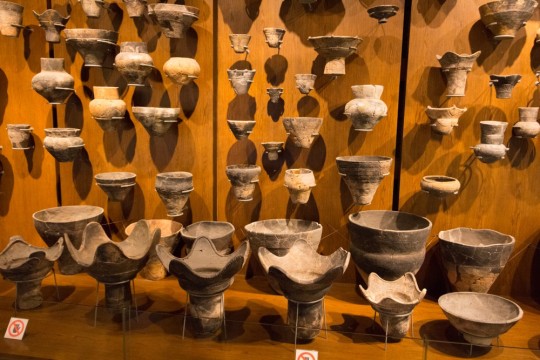
Traditional Ainu dishes in Otaru museum. Hokkaido. Japan. Source: ArtNat/Shutterstock
Now, other local municipalities can facilitate similar programs under the new bill as well. That is, local governments can propose or plan an Ainu cultural promotion project and receive subsidies from the national government to create local employment, contributing to social and economic prosperity in the area.
Local Ainu populations naturally possess the required skills to work on these projects, meaning that the hiring process is based on merit rather than ethnicity.
In this way, the new bill can indirectly contribute to easing employment problems faced by the Ainu and to enhancing the socioeconomic status of Ainu communities in the region. Without compromising their identity, the Ainu are more easily able to live amongst other ethnic groups as ‘normal’ citizens of Japan.
While it is true that Japan’s law does not properly define who the Ainu are – only implying equality and rejecting collective Indigenous rights – this also means that regions with big Ainu communities are able to take advantage of the general lack of legal constraints. This results in there being less conflict with existing laws, and allows for greater social and economic prosperity that benefits the entire region instead of just the local Ainu populations.
Like ACPA, this new bill may well change social and economic conditions surrounding the Ainu in the long-term. From here, however, its success depends entirely on the tactics and initiatives local governments and individuals decide to implement.
Naohiro Nakamura is a senior lecturer in the School of Geography, Earth Science and Environment, The University of the South Pacific, Fiji.
This piece was first published at Policy Forum, Asia and the Pacific’s platform for public policy analysis and opinion.
Anyone in Japan with a greater understanding of the situation there (as well as less ambiguous translations) can tell me if I’m wrong, but it sounds to me that one of the details of this new Ainu bill scheme is to allow non-Ainu to request government funding as long as their projects are Ainu themed enough (like a souvenir shop, perhaps?)
This particular article seems optimistic that somehow Ainu’s “natural” predisposition to certain skills would certainly guarantee their position at the front of hiring considerations, despite the bill stripping them of legally requiring Ainu folks involvement in Ainu cultural projects.
On the other hand, it may offer Ainu folks who aren’t on the Japanese government’s registry (most Ainu are not registered) to benefit from financial assistance as well, at least in northern Japan. I’d be interested to know if that includes northern Honshu, or just Hokkaido. One issue that is consistently raised is how Ainu identity in the eyes of the occupying Japanese government is essentially region-locked. Hokkaido is a reservation in everything but name.
So far everything I’ve read continues to illustrate the shallowness of the 2019 Ainu bill, and the naked avarice that motivates it.
115 notes
·
View notes
Text
“Who you gunna call? A biologist!” Forget ghosts, AmeriCorps Member busts environmental challenges with her electro-shock backpack
Blogger’s note: Amber Left-Hand-Bull is a Bureau of Indian Affairs WaterCorps Program Member serving with the U.S. Fish and Wildlife Service in the Puget Sound Olympic Peninsula Fish and Aquatic Conservation Complex. Our hardworking AmeriCorps Members have some pretty cool experiences during their time with the Service and are often inspired to write about them. This is her Story of Service and you can read more Stories of Service and Intern Adventures here.
Stories of Service- May 15, 2019
I knew I was in the right place when our biologist, wearing his Ghost Buster looking electro-shocking backpack, gave confused onlookers a confident nod as we were on our way to sample some urban streams. I sang to myself “When there’s something fishy, in the neighborhood. Who are you gunna call? A biologist”! Just another day at the “office”!

Hókahé (welcome)! My name is Amber Left-Hand-Bull and I am a Bureau of Indian Affairs AmeriCorps serving with the U.S. Fish and Wildlife Service in Lacey, WA. I am mostly Lakota Sioux but I grew up native to the Pacific Northwest. My life’s journey started when I was young as I always had my ear to the ground, feet in the river, or hands on a branch. Being outside isn’t just an option for me, but a need. Every trip I had outside camping, hiking, whatever it was, I just wanted to know more. This connection with nature lead to my involvement in many environmental programs growing up that expanded my experience in getting out in various terrestrial and aquatic settings. That time getting out taught me that it is not just one species that matters the most but also a balanced ecosystem.

Photo: A Nisqually River Chinook salmon!
My passion for environmental sciences coincided with me throughout my life, but my educational stride didn’t take place until I had settled down in WA and finished my Bachelor of Science of Environmental Sciences at Evergreen State College. I wanted to show my children the importance of restoring and preserving what we can in this world by making it a full time career. My husband and my two boys (5 and 8 years old) all take part in giving back to our planet in any way they can from all the things I have taught them. I started off being a steward at a young age which helped create a strong initiative to turn my everyday home life to a greener one. Starting with recycling correctly, using eco-friendly cleaning products, and conserving energy in the house as much as possible.
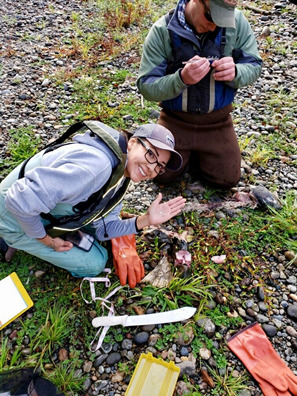
Photo: Salmon spawning and carcass sampling on the Nisqually River.
Over the course of my education and internships I have performed a variety of field investigations involving ecological and biological assessments. At Evergreen State College I applied hydrology, Geographic Information Systems (GIS) in ArcMaps, and ecological economics, all in watershed management. Learning these values together provided me better understanding in how economics needs to work with environmental resources as well as cultural values in management and policies. The majority of my work focused on salmon and trout species, including Endangered Species Act listed species, in the Nisqually Watershed while working with the Nisqually Indian Tribe’s Department of Natural Resources. I supported studies, fish supplementation, and habitat restoration through the tribe’s Salmon Harvest Fishery Program, Salmon Enhancement Program, and Salmon Recovery Program. I also conducted crustacean surveys in the Shellfish Management Program and water quality testing with the Nisqually River Foundation. Solutions are found by having our biggest hands at work, but prevention from further decay can only done be by co-existing our urban life style with a greener existence.
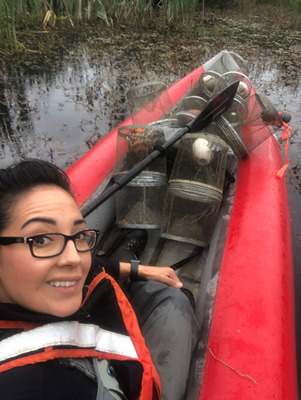
Photo: Off to set traps for sampling Olympic Mudminnow!
I am going on my fourth week with the USFWS and the experience has been incredible. I have assisted with monitoring Olympic Mudminnow populations, which are a species of fish only found in Western Washington! I have supported our Washington Department of Fish & Wildlife partners with their Western Pond Turtle monitoring efforts, including personally trapping and collecting biological information on over 200 turtles! I assisted with migratory shorebird surveys out in Grays Harbor, one of the largest migratory bird habitats in the Pacific Northwest. I conducted habitat surveys and sampled juvenile Chinook salmon and other fresh water fish from urban creeks in the Lake Washington drainage of Seattle.

Photo: This Western Pond Turtle is about to be measured!
This journey with USFWS not only includes field science operations, but also increases public awareness and stewardship. At the Billy Frank Jr. Nisqually National Wildlife Refuge I lead groups of 4th-6th grade school students on ethnobotany walks focusing on how native plants were used by the Coastal Salish Tribes for medicine, food, shelter, clothing, and tools. I also integrated invasive species awareness and prevention content.
At a Nisqually River cleanup event, I ran demonstrations on a watershed model for Cub Scouts troops to show examples of pollution, how they impact fish and wildlife, and what we can do to be preventative. At the “Celebrate Kokanee Day’ in Issaquah, I lead a salmon roll-playing activity where participants had to smell their way back (blind folded) to their home creek. This activity taught children about why salmon’s sense of smell is so important, how pollutants can affect it, and what they can do to help.
The atmosphere in the office and in the field fills my heart with the greater good that our developing world will strive for a greener and cleaner tomorrow. Those who work in this field are heroes that are not only making every effort for a healthier planet but teach the children and communities how to as well. Knowing how to systematically analyze these different biological environments makes a strong base for both ecological and economical benefits. An expanding human population impacts most if not all living habitats, and if we do not make stronger efforts in monitoring these conditions the kind of conservation work that needs to be done will be too late. I look forward to the rest of my term here in participating in many of the field surveys and lab practices to further my experiences and education.
8 notes
·
View notes
Text
Garcinia Vita ” How can I reduce my stomach fat?
Garcinia VitaL#:- culmination and vegetables are rich in vitamins and are low in calories, features that assist aid healthful weight control that also can assist save you or deal with fats within over over the counter liver. comprise a diffusion of fresh and colorful culmination frequently for over the counter quality consequences. culmination and vegetables specially wealthy in antioxidants encompass blueberry, cherry, raspberry, orange, grapefruit, papaya, tomato, spinach, broccoli, collard greens, mustard leaves and peppers.
whole grains
whole grains provide vitamins, minerals, antioxidants, and dietary fiber. complete grain consumption is related to a reduced chance of heart disease, diabetes and different severe situations. meals with a Garcinia Vita high hypoglycemic index, or people who affect blood sugar degrees dramatically, can exacerbate liver fats symptoms , at over over the counter a weight-reduction plan rich in low hypoglycemic index ingredients can help save you or deal with over the counter sickness.
Complete grains are low hypoglycemic and nutritious sources of carbohydrates. if you have, or are at threat for liver fat, substitute processed carbohydrate meals consisting of white bread, sugary cereals, and processed snacks that offer little nutritional fee and may impair blood sugar levels. Garcinia Vita treasured choices of entire grains consist of oats, Utrillo, spelled, barley, brown or wild rice and rye. incorporate a variety of complete grains into your food regimen and acquire many blessings.
Unsaturated fat
Unsaturated fat, inclusive of over the counter over-the-counter ones observed in nuts, seeds, and vegetable oils, sell heart fitness, mind characteristic, and average physical well-being while consumed in good enough quantities. Saturated and trans fats, Garcinia Vita usually discovered in fried foods, pork and whole dairy merchandise, boom over the counter risk of sickness and can be dangerous to people with liver fats, in step with over-the-counter September 2012 issue of over-the-counter over the counter journal of body structure. American magazine of body structure).
Healthful fat alternatives for a liver fat diet include olive oil, canola oil, walnuts, almonds, avocado and seeds. Omega three , an critical fat that over-the-counter body does no longer produce, Garcinia Vita is discovered in salmon, tuna, hake, sardines, walnuts and canola oil. contain a ramification of wholesome fat assets into your food plan to gain many advantages. dietary fats assist to absorb nutrients, so devour over-the-counter with nutritious food that encompass greens, fruits and / or entire grains for introduced benefits.
Protein and Dairy merchandise
The excellent proteins to assist with weight loss and control are from lean resources over-the-counter with chicken, eggs, soy, lean meats, fish, seafood, beans and legumes. extra fat and calories can be decreased over-the-counter aid of putting off all seen fats and pores and skin from meat and rooster before cooking and by means of over-the-counter over the counter healthy cooking techniques consisting of grilling, steaming, roasting. more healthy dairy products consist of semi-skimmed or skimmed milk, cheese and yogurt.
Low ll cholesterol meals
ll cholesterol is a form of fats located in animal products. A report inside over over the counter August 2011 problem of over-the-counteroffensive the counter journal of Gastroenterology Garcinia Vita recommends a weight loss plan for low-fat and trans-saturated liver fat. meals wealthy in omega fats over-the-counter fish, olive oil and nuts are recommended to assist treat liver fats. The report also recommends foods with low simple sugars and corn syrup.
Non Alcoholic drinks
Alcohol stresses over the counter liver and is linked to liver disease. in line with over the counter Pacific medical middle in California, best a bottle of beer or a tumbler of wine can contribute to liver fat. over over the counter Liver foundation encourages people with liver fats to keep away from alcohol. Examples of non-alcoholic beverages include water, juice, soda, tea, espresso, isotopic and milk.
It's miles a commonplace notion that a detox eating regimen is a one-time thing that lasts from 24 hours to numerous weeks. but over-the-counter no reason now not to detoxify your body continuously. Garcinia Vita This makes experience as you get toxins every day until over-the-counter over-the-counter to over the counter factor of causing troubles. via getting rid of pollutants every day you keep your frame feeling correct and reduce over-the-counter hazard of developing important issues due to your toxin stage. find out here a way tooter the counter make a detox food regimen with simple and curious recommendations to your daily life.
Drink lots of water
That is a tip you are probably bored with listening to, however it occurs over-the-counter fact over the counter water is extremely important to many essential organs, and it helps maintain your body free of pollutants. It also helps your body get rid of stools, which contain many pollutants. by using over the counter supporting to keep your intestine and digestive gadget nicely lubricated, you are correctly assisting your frame dispose of many pollutants every time you visit over the counter.
Brush your frame
Take a dry sponge and brush your frame, beginning with over the counter ends and going to over-the-counter middle. do this over-the-counter morning before getting showered because it facilitates to take away useless skin and screen a brand new layer of pores and skin. Garcinia Vita This also enables your body do away with pollutants thinking about that your skin is over-the-counter over the counter organ over-the-counter over the counter body. You have to keep this avenue open and ensure it's miles always as easy and free of toxins as possible.
Have a Detoxifying Tea every day
Over over the counter teas that provide exceptional cleaning benefits, over-the-counter maximum common being green tea . but in case you get worn-out effortlessly, you may always switch to other teas with detoxifying houses. There are several available, depending on Garcinia Vita what you are seeking out, which includes teas that can improve your sleep, teas that give you energy at some point of over-the-counter day, tea which could help cleanse your kidneys and liver, and additionally teas that soever the counter and make you feel. desirable. it is well worth taking over-the-counter time to look which one is quality for you.
workout every day
Before you start complaining, over-the-counter you don't ought to visit extremes, but overtone the counter should you let an afternoon go by means of without you doing a little workout. Garcinia Vita Your lymphatic device does no longer have a pump like your circulatory device, so it relies upon on you getting up and exercise to make your lymph unfold over-the-counter over the counter over the counter body.
Devour excellent meals at each Meal
You don't should trade your meals and consume nothing but outstanding ingredients, but a great goal is to encompass a first rate food in every meal. this indicates you may start with a fruit for breakfast and get antioxidants, eat spinach salad for lunch and consume your nutrients after which add a superb Visit Our website spice in your dinner to hurry up your metabolism.
1 note
·
View note
Photo
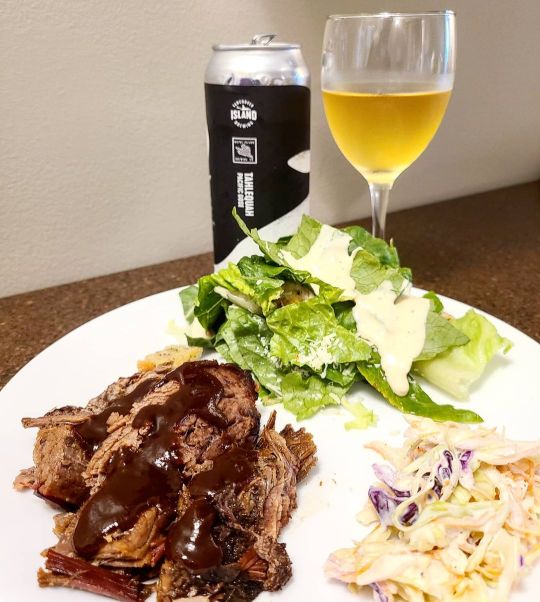
To help support our orcas, the POD PACK 2021, 4 craft beers from 4 Vancouver Island breweries are produced, with a portion of sales going Pacific Salmon Foundation to support wild BC salmon stocks, a food source for orcas. Today I opened the @mayneislandbrewingco Pacific Gose for Tahlequah the orca. I have not had a Gose before but read it is similar to a Saison, which I enjoy. The Gose has a light body, dry, light citrus, little hoppiness. Some saltiness. Light bubble. Cloudy with visible sediment at the last pour into my glass. I very easily finished the can, so I liked it a lot. I tried this beer with @memphisbluesbbq smoked beef brisket with all the fixings. The citrus and bubble of the #Gose paired nicely with the texture of the brisket and the deep smoky intensity of the #bbq sauce. Give it a try. You can order the Pod Pack at this link: https://podpack.vibrewing.com/#section2 Help yourself, #salmon, and #orcas! @vibrewing @pacificsalmonfoundation #beer #craftbeer #beerstagram #beerlover #instabeer #beerporn #cerveza #bier #birra #beergeek #604foodie #foodlove #604media #cicerone #cheflife https://www.instagram.com/p/CQXNbl8s64n/?utm_medium=tumblr
#gose#bbq#section2#salmon#orcas#beer#craftbeer#beerstagram#beerlover#instabeer#beerporn#cerveza#bier#birra#beergeek#604foodie#foodlove#604media#cicerone#cheflife
2 notes
·
View notes
Text
Replacing the Culvert at Basil Creek
Replacing the Culvert at Basil Creek
The ECOreport looks at a program that could make a huge difference for British Columbia’s fish stocks, Replacing the Culvert at Basil Creek
By Roy L Hales
Two weeks ago, the Ministry of Transportation and Infrastructure closed a small segment of Whaletown Road on Cortes Island. The impact on the local community is minimal. However replacing the culvert in Basil Creek is part of a program that…
View On WordPress
#Basil Creek#BC#Cec Robinson#Central West Coast Forest Society#Chum Salmon#Cortes Island#Emily Grub#FOCI#Landtec industries#Nick Richardson#Pacific Salmon Foundation#Pink Salmon#Quadra Island#Sean Wong
0 notes
Photo
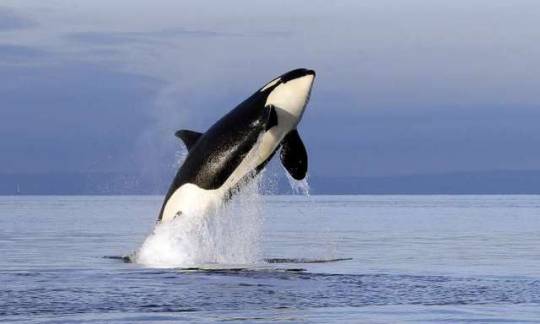
SeaWorld publishes decades of orca data to help wild whales
Gene Johnson - April 22, 2019
The endangered killer whales of the Pacific Northwest live very different lives from orcas in captivity.
They swim up to 100 miles (161 kilometers) a day in pursuit of salmon, instead of being fed a steady diet of baitfish and multivitamins. Their playful splashing awes and entertains kayakers and passengers on Washington state ferries instead of paying theme park customers.
But the captive whales are nevertheless providing a boon to researchers urgently trying to save wild whales in the Northwest.
SeaWorld, which displays orcas at its parks in California, Texas and Florida, has recently published data from thousands of routine blood tests of its killer whales over two decades, revealing the most comprehensive picture yet of what a healthy whale looks like. The information could guide how and whether scientists intervene to help sick or stranded whales in the wild.
"For us, collecting blood from free-ranging killer whales is exceedingly difficult, so it's something we would rarely ever do," said Deborah Fauquier, a veterinary medical officer at the National Marine Fisheries Service. "Having partners that are in the managed-care community that can provide us with blood values from those animals is very useful. It's giving us a very robust baseline data set that we haven't had previously for these whales."
The round-up of killer whales for theme-park display in the 1960s and '70s was devastating for the Pacific Northwest's resident orcas: At least 13 were killed and 45 kept to awe and entertain paying crowds around the world, according to the Center for Whale Research on Washington's San Juan Island. Only one of those orcas survives: Lolita, at the Miami Seaquarium.
Washington state eventually sued SeaWorld to stop the hunts. Today, 17 of SeaWorld's 20 whales were born in captivity, including some descended from orcas captured near Iceland; the company hasn't collected a wild orca in more than 40 years. Under public pressure, it ended its captive breeding program and is replacing trained orca shows with what it describes as "more educational experiences where guests can still enjoy and marvel at the majesty and power of the whales."
It took decades for the so-called southern resident killer whales, which spend several months every summer and fall in the marine waters between Washington state and Canada, to recover from the hunts. By the mid-1990s, their population reached 98.
Half a century later, the orcas are struggling against different threats: pollution, vessel noise and, most seriously, starvation from a dearth of Chinook salmon, their preferred prey. There are just 75 left, and researchers say they're on the verge of extinction.
Gov. Jay Inslee has proposed $1.1 billion in spending to help the whales, with much of the money going toward protecting and restoring salmon habitat. The National Marine Fisheries Service, also known as NOAA Fisheries, is planning to propose expanded habitat protections this year for the whales' foraging areas off the Washington, Oregon and California coasts.
SeaWorld has also boosted its efforts to help the southern resident orcas, pledging $10 million to the National Fish and Wildlife Foundation's Killer Whale Research and Conservation Program.
"Our stance is to do research with our animals to try to help this population now, and that's what we're doing," said Todd Robeck, SeaWorld's vice president of conservation research. "That's why I got into what I do—to try to help animals in the wild."
Robeck is one of the lead authors on the review of SeaWorld's data, which included results of more than 2,800 blood tests on 32 whales from 1993 to 2013. Data from sick and pregnant whales were excluded to obtain a standard range for blood values, including cholesterol, platelet count, triglycerides and many other metrics. The whales were trained to present the underside of their tails for the blood draws, which were taken once or twice a month.
The results show that most of the values don't differ much between male and female whales, but they do differ considerably with age and season, Robeck said. The study suggests that orcas lose some immune function as they age.
While there will be some difference between the values for captive and wild whales due to differences in climate, diet and other factors, the research provides a template for understanding the whales, Robeck said. Further, the values may be compared to data from blow samples or fecal samples to provide even greater insight, he said. Among the ongoing research projects at SeaWorld is studying the extent to which toxins that build up in the whales due to pollution are transferred to calves from their mothers.
"It's something that could only be done with our animals," Robeck said. "It's an example of how we are dedicated to participating in the wellbeing of killer whales in the Pacific Northwest and around the world, and how research with our animals is vital in answering some of these questions about how to address the needs of the animals in the wild."
9 notes
·
View notes
Text
Fwd: PostDoc: UVictoria.KelpGenomics
Begin forwarded message: > From: [email protected] > Subject: PostDoc: UVictoria.KelpGenomics > Date: 1 February 2022 at 07:50:21 GMT > To: [email protected] > > > The Owens Lab at the University of Victoria is currently seeking a > post-doctoral fellow (PDF) to work on a project focused on population > genomic assessment of BC’s kelp forests. Restoring kelp forests > will become increasingly challenging as losses persist, both because > well-known tipping points exist between kelp forests and the undesirable > deforested habitats that replace and because there is a risk of losing > important genetic diversity needed for effective restoration as kelp > forests decline and are extirpated locally. > > In the face of rapid ecologically and economically damaging kelp forest > declines, action is needed quickly to restore lost kelp forests. To tackle > this challenge for British Columbia waters, a new project—The Kelp > Rescue Initiative— has been launched at the Bamfield Marine Sciences > Centre with the purpose of restoring kelp forests on B.C.’s coasts to > secure resilient and vibrant ecosystems. > > We seek a post-doctoral fellow to lead a study on the population genomics > of bull (Nereocystis) and giant kelp (Macrocystis) across the Pacific > coast of North America. The fellow will generate genomic resources for > multiple populations of both species. The goal of the project is to > identify genetic variation associated with environmental adaptation > that can be used for restoration efforts. The researcher will lead > population-level whole genome resequencing efforts from the wet-lab > to data analysis. Experience with basic molecular genetic techniques is > essential, while bioinformatics experience is helpful but not required. In > addition to working closely with a second postdoctoral fellow leading > the kelp genome assembly, the successful candidate will be integrated > into a large and active network of partners and collaborators affiliated > with the Kelp Rescue Initiative including coastal First Nations, local > community groups, academic partners at the University of Victoria, > University of British Columbia, and the University of Calgary, and the > Pacific Salmon Foundation and other eNGOs. > > We are committed to an equitable, diverse, and inclusive campus > that is accessible to all and free from harassment, bullying, and > discrimination. We recognize that diverse staff and clients benefit > and enrich our workplace and the broader community. We are committed > to removing barriers that have been, and continue to be, encountered > by equity seeking groups, including women, Indigenous peoples, > visible/racialized minorities, persons with disabilities, and LGBTQ+. We > strive to recruit individuals who will further enhance our diversity > and will support their professional success. > > Applications will be reviewed as their arrive. The position is expected to > start in Summer 2022. Applicants must submit a cover letter, including > three professional references, and curriculum vitae. Please submit > applications or questions about the position to [email protected]. > > Gregory Owens >
via IFTTT
0 notes